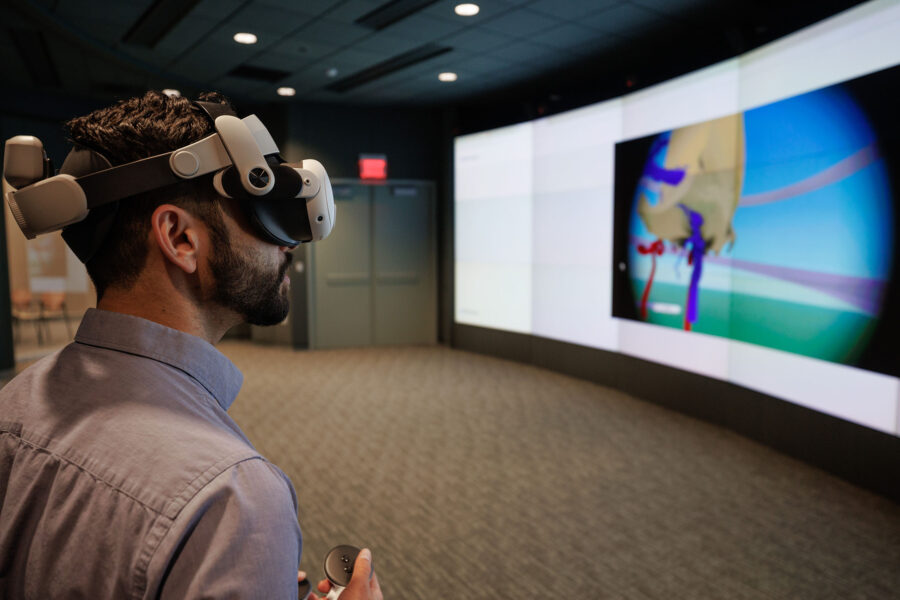On Sept. 26, the UNMC iEXCEL program hosted a statewide stroke conference with a difference.
The Nebraska Department of Health and Human Services’ second conference held at iEXCEL was called “Stroke Transitions Across the Continuum.” By using cutting-edge hologram technology, interactive iWalls and virtual reality, the conference was able to be held at four sites, in Omaha, Kearney, Norfolk and Scottsbluff, with the approximately 150 attendees able to interact with the often-holographic presenters and each other, as well.
“It has long been iEXCEL’s ambition to adopt emerging technologies that connect training sites across the state of Nebraska,” said Pamela Boyers, PhD, associate vice chancellor of clinical simulation and iEXCEL. “Thanks to terrific teams of technicians, creators and innovators who worked so closely together, this conference marked another milestone in ensuring ‘real-time’ statewide outreach.”
The conference was the latest example of how UNMC is leading the way in interactive, accessible education for health professionals and health profession students across Nebraska, said Michael Hollins, assistant vice chancellor for creative production and emerging technology.
“This educational conference for working health professionals showcases how holographic, interactive and VR technology can break geographic barriers, enabling real-time collaboration and learning,” Hollins said.
“Although this was a continuing education conference for working professionals, the technology also can be used for UNMC medical and health professions students,” he said. “This is especially important now that UNMC is expanding its educational programs in central Nebraska.”
Attendees included EMS first responders, physicians, nurses, rehabilitation specialists, occupational and physical therapists and interprofessional students.
Click the Play button below to watch this video about the stroke conference.
One exciting and interactive aspect of the conference was an “escape room,” where teams at all sites competed to diagnose and treat a medical stroke emergency. The “clues” – symptoms, reactions and information provided by the patient – were drawn from a real case.
At the conclusion of the conference, the patient – speaking from a Holobox – revealed himself to the attendees with a pre-recorded holographic message emphasizing the importance of their work and the positive impact that preparedness and training had on his own case.
Nichole Cooks, stroke program coordinator for Nebraska Medicine, said:
“Bringing together professionals from across the state in such an immersive and interactive way allowed us to learn and educate in ways we never have before. The escape rooms, holographic and 3D images, iWall decisions – all gave us a chance to apply best practices and collaborate in real time with colleagues miles away. This conference showed what’s possible when innovation and collaboration come together to better stroke care.”
Dr. Boyers, Cooks and Hollins are excited to begin thinking about next year’s conference.
“This is the future of medical and health training, and the technology continues to evolve,” Hollins said. “Who knows what we will be able to offer in terms of simulation experiences next year?”
